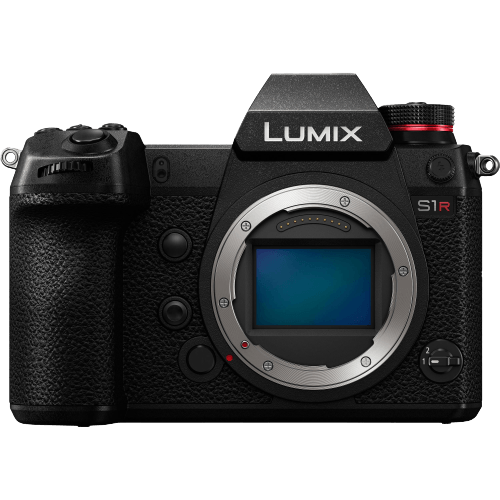Panasonic Lumix DC-S1R Specs and Scores

The Panasonic Lumix DC-S1R receives a score of 83/100 for its general specifications. Launched in 2019 with a price tag of $3,700, this mirrorless camera has dimensions of 149 x 110 x 97mm and weighs 1020g or 2.25lbs. Considering its release in recent years, the camera’s specs hold up well in the current market.
With its size and weight, the Lumix DC-S1R offers a robust build and reliable performance. Its specifications make it a strong contender among other mirrorless cameras available today.
Panasonic Lumix DC-S1R Overview and Optics
The optics of the Panasonic Lumix DC-S1R receive a score of 83/100. This camera boasts an impressive 47.3 megapixels, enabling high-quality images. The shooting speed of 9 frames per second is efficient for capturing fast-moving subjects. Equipped with a CMOS sensor and powered by a Venus Engine processor, the camera achieves a notable DXOMARK score of 100 for its sensor.
The full-frame sensor size ensures excellent image quality and low-light performance. The Leica L lens mount offers compatibility with a wide range of high-quality lenses. Additionally, the built-in image stabilization reduces camera shake, resulting in sharper images. The 3:2 aspect ratio is a standard format, suitable for various photography needs.
The Panasonic Lumix DC-S1R’s optics stand strong in today’s market, offering superior image quality and versatility. With its remarkable specifications, this camera is a solid choice for both professionals and enthusiasts alike.
Panasonic Lumix DC-S1R Video Performance
The Panasonic Lumix DC-S1R receives a video score of 69/100. Its video capabilities include a maximum resolution of 4K and dimensions of 3840 x 2160. The camera supports a maximum video frame rate of 60fps. However, it does not have built-in time-lapse functionality.
In the current market, the Lumix DC-S1R’s video features are competitive, but not exceptional. The 4K resolution and 60fps frame rate are standard in many cameras, but the absence of time-lapse functionality is a drawback for some users.
The Lumix DC-S1R offers solid video performance, but it may not be the top choice for those seeking advanced video features. The camera’s strengths lie in its general specifications and optics, while its video capabilities are sufficient but not outstanding.
Panasonic Lumix DC-S1R Features and Benefits
The Panasonic Lumix DC-S1R boasts a feature score of 87/100, showcasing its impressive capabilities. It has a 3.2-inch screen with a resolution of 2,100,000 dots, providing sharp and clear image previews. This camera also features a touchscreen and flip screen, making it user-friendly and versatile for various shooting angles.
In terms of connectivity, the Lumix DC-S1R is equipped with both Wi-Fi and Bluetooth, allowing seamless transfer of files and remote camera control. However, it lacks GPS functionality, which may be a downside for some users who require geotagging capabilities.
Comparing the Lumix DC-S1R’s features to other cameras in today’s market, it holds its ground with its high-resolution screen, user-friendly interface, and connectivity options. While the absence of GPS is a minor drawback, the overall package still makes it a strong contender in the professional camera market.
Panasonic Lumix DC-S1R Storage and Battery
The storage and battery capabilities of the Panasonic Lumix DC-S1R receive a score of 68/100. This camera has two memory card slots, accepting both SD/SDHC/SDXC and Compact Flash cards, providing users with flexibility in storage options. However, the battery life of the Lumix DC-S1R, with 360 shots per charge using the DMW-BLJ31 battery, falls short in comparison to some competitors in the market.
The Lumix DC-S1R does have USB charging functionality, which can be a convenient feature for on-the-go photographers. Despite a lower battery life, the storage options and USB charging make this camera a reliable choice for various photography needs.
